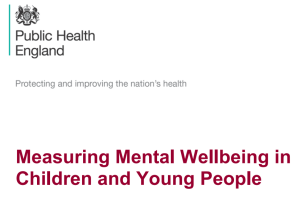Mental wellbeing has wide ranging impacts upon an individual, their quality of life and the wider society. It is of particular importance to children and young people as it is thought to influence the way in which an individual copes with key life events such as stress, trauma and physical ill-health . Not only are those with better mental wellbeing likely to deal better with stressful events and recover more quickly from illness, but they are also less likely to engage in behaviours which may put their health at risk
 The National Mental Health, Dementia and Neurology Intelligence Network have published a new guide to Measuring Mental Wellbeing in Children and Young People.
The National Mental Health, Dementia and Neurology Intelligence Network have published a new guide to Measuring Mental Wellbeing in Children and Young People.
→This will be useful if you work in public health and want to support local Joint Strategic Needs Assessments (JSNA) and the commissioning of interventions to improve the mental wellbeing of local children and young people.
The guide covers:
- what mental wellbeing is for children and young people
- why it is important
- what affects it – the key determinants
- how to use information from a range of national and local sources to improve metal wellbeing
- the measures that can be used to quantify mental wellbeing and its key determinants
- information on how to use the measures
- links to examples of evidence based practice
Find other useful tools →Wellbeing Data & Resources

